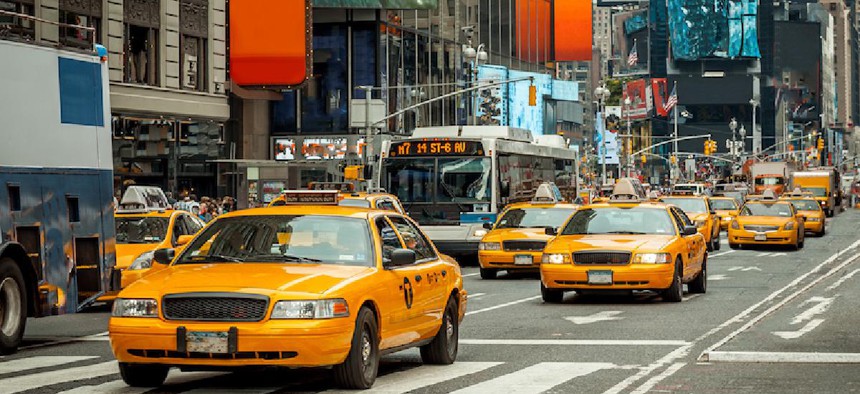New Yorkers are right to be angry about a recent audit by Comptroller Scott Stringer that found the city failed to collect nearly $6 million to promote wheelchair-accessible taxis. But the comptroller’s findings are just the tip of the iceberg on a flawed accessibility program that is spiraling out of control under Mayor Bill de Blasio’s watch.
New York City’s taxi industry has been trying for years to comply with an accessibility program that is fundamentally broken - $6 million will not save it. But it can be strengthened if the mayor and his Taxi and Limousine Commission make sensible reforms to support both taxi drivers and wheelchair users.
This program began in 2013 after an agreement to make 50 percent of the city’s yellow taxis wheelchair-accessible by 2020. It operates under TLC rules that require some taxi owners to purchase and operate accessible cars.
Some important progress has been made, as around 13 percent of the city’s nearly 14,000 yellow taxis are now accessible to wheelchair users. But those numbers also clearly show that the city is not on track to make half of the taxi fleet accessible.
RELATED: Could congestion pricing save the subway?
There are two fundamental problems that are driving the accessible taxi program into the ground. One involves an absurd decision to grant a monopoly to one car manufacturer, and the other is a result of the city’s failure to level the playing field between yellow taxi drivers and Uber and other ridesharing companies.
Before the 2013 agreement that established the accessibility program, the city had already given an exclusive contract to Nissan for its NV200 model, also known as the “Taxi of Tomorrow.” As a result of the agreement, this model became the only vehicle allowed for use as an accessible taxi in the five boroughs. Simply put, the NV200 is a clunker that is terrible for city streets.
The NV200 gets only 23 miles per gallon – less than half the fuel efficiency of hybrid cars that drivers are demanding. And because virtually all of these NV200s were retrofitted with old accessibility ramps and other outdated equipment, many of them are literally falling apart. This means that the vehicles are much too costly for taxi drivers to use – even after the city kicks in a monetary incentive.
There is an easy solution: stop forcing taxi drivers to use the NV200 and let them pursue accessible, fuel efficient vehicle options that meet their needs and those of the riding public.
RELATED: DOT Chief Driscoll talks transit as 'summer of hell' begins
Meanwhile, as taxi drivers are forced to drive less fuel-efficient non-hybrid wheelchair accessible vehicles, ridesharing companies like Uber are still not required to meet any accessibility standard. News of a recent lawsuit against Uber by disability rights advocates showed that less than one percent of the company’s New York City vehicles are accessible to wheelchair users. Mayor de Blasio and the TLC have repeatedly ignored disability advocates and refused to mandate 50 percent accessibility for Uber.
The result is that Uber and its counterparts have an unfair advantage over the yellow taxi industry, which is stuck with substandard options. This is part of the reason why Uber has made such a significant dent in the industry and made it so much harder for yellow taxi owners to keep accessible vehicles on the road.
There is another easy solution here: make Uber adhere to the same accessibility standard as taxis. City Councilman Ydanis Rodriguez has announced plans to introduce legislation mandating 50 percent accessibility for ridesharing companies, and it should be passed as quickly as possible.
Everyone agrees that wheelchair users should have greater access to quality transportation options. But unless the city fixes these problems, the accessible taxi plan is doomed to failure. Hopefully, the comptroller’s recent audit is the wake-up call that forces Mayor de Blasio and the TLC to fix the deeper flaws in this program.
David Pollack is the president of the Taxicab Service Association


